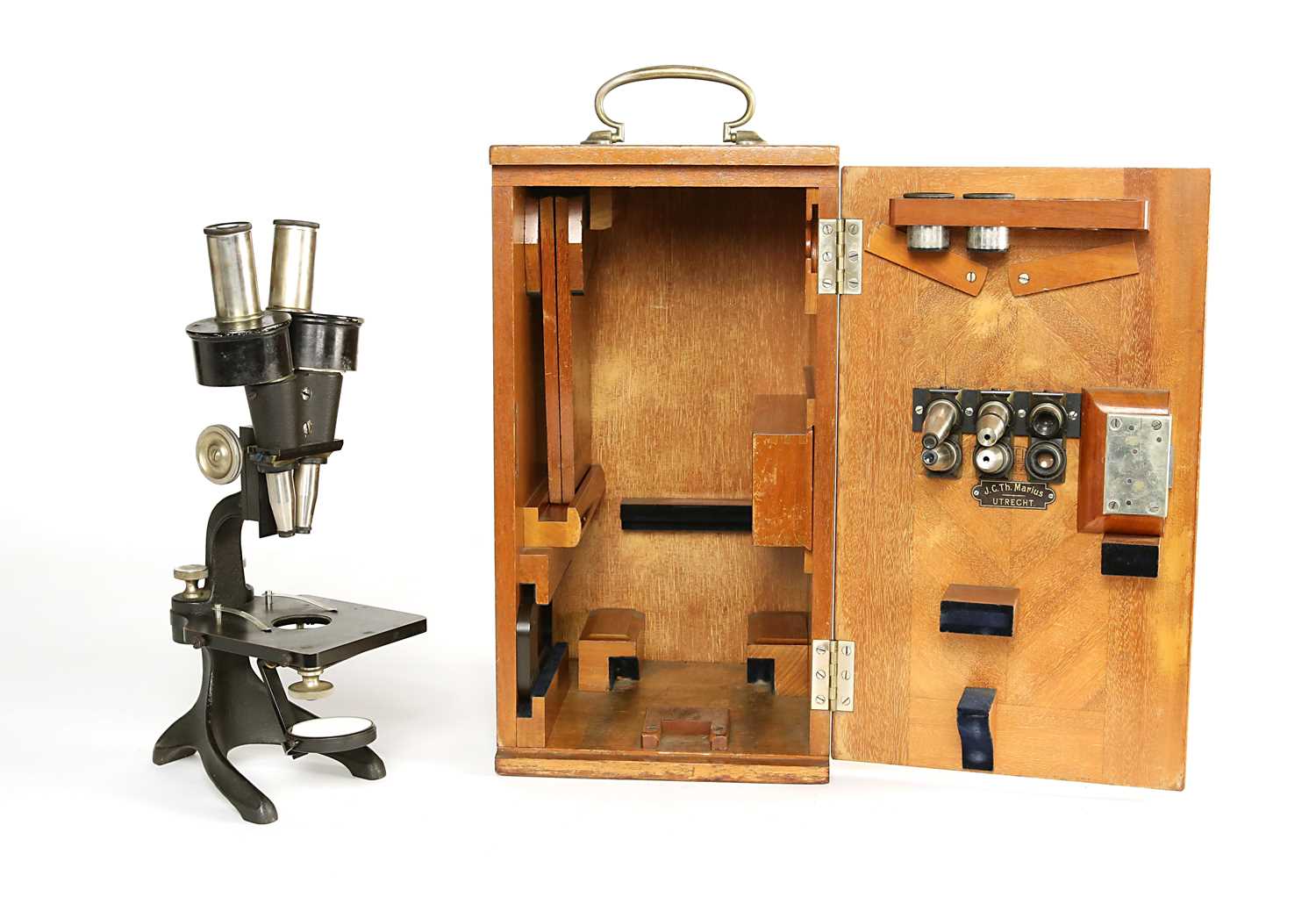1st May, 2000 12:00
Instruments of Science and Technology
127
A Carl Zeiss, Jena, Greenough Stereo Microscope, c. 1930
A Carl Zeiss, Jena, Greenough Stereo Microscope.
Germany, circa 1930.
Serial no. 47818, cross table, double mirror, with 3 pairs of eyepieces and 4 pairs of objectives in orginal wooden box.
Measurement: H. 34 cm.
catalogue Note: Carl Zeiss Jena that was originally founded on the production of microscopes continued to increase the diversity of their models, and the company advanced microscope technology. In 1892 Horatio S. Greenough, an American biologist suggested a promising concept for Abbe, by the end of 1897 the first stereomicroscope ever made providing true three-dimensional views was completed at Zeiss. The arrangement became known as a “Greenough Optical Train” that at first glance appears to be two microscope optical assemblies, each complete with its own objective lens and eyepiece but paired and aligned alongside. This differs from a binocular microscope that has only one objective lens focused on the object of study, and that incorporates a beam splitter that splits that light from the image then feeds it on to two eyepieces to attain binocular vision.
Estimate: 150-300
Sold for €162
A Carl Zeiss, Jena, Greenough Stereo Microscope.
Germany, circa 1930.
Serial no. 47818, cross table, double mirror, with 3 pairs of eyepieces and 4 pairs of objectives in orginal wooden box.
Measurement: H. 34 cm.
catalogue Note: Carl Zeiss Jena that was originally founded on the production of microscopes continued to increase the diversity of their models, and the company advanced microscope technology. In 1892 Horatio S. Greenough, an American biologist suggested a promising concept for Abbe, by the end of 1897 the first stereomicroscope ever made providing true three-dimensional views was completed at Zeiss. The arrangement became known as a “Greenough Optical Train” that at first glance appears to be two microscope optical assemblies, each complete with its own objective lens and eyepiece but paired and aligned alongside. This differs from a binocular microscope that has only one objective lens focused on the object of study, and that incorporates a beam splitter that splits that light from the image then feeds it on to two eyepieces to attain binocular vision.
Estimate: 150-300
Auction: Instruments of Science and Technology, 1st May, 2000
Hessink's proudly presents the sale of a fine single owner collection of Instruments of Science and Technology. The sale offers you a great opportunity to purchase beautiful selection of globes, microscopes, telescopes, medical, drawing, surveying and navigational instruments from famous instrument makersfrom the 17th to the 20th century.
